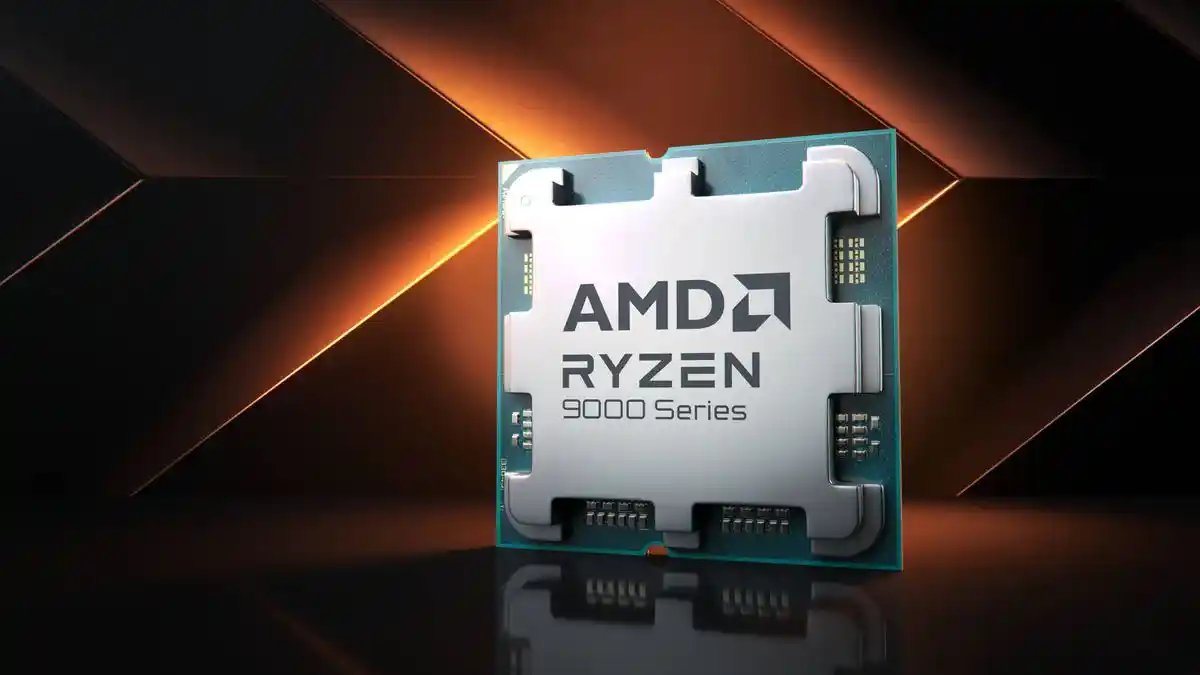It wasn’t too long ago that AMD was seen as the scrappy underdog in the high-performance computing race, always just a step behind Intel in CPUs and chasing NVIDIA in graphics. But over the last few years, AMD has completely reshaped that narrative. Through strategic architectural innovations, bold pricing moves, and a commitment to platform consistency, the company has become a serious force across gaming, productivity, AI, and server markets.
And now, with the upcoming Zen 5 CPU lineup and RDNA 4 GPUs on the horizon, AMD is making it clear: the next wave isn’t about catching up. It’s about taking the lead.
The 2025–2026 period may be the most important stretch in AMD’s recent history. It’s not just about better silicon anymore. It’s about shaping how computing itself will evolve—from everyday desktops to the AI datacenters of tomorrow.
Let’s break down AMD’s next move and why the tech world is watching closely.
The Zen Journey: From Underdog to Powerhouse
Before diving into what Zen 5 will bring, it’s important to understand just how far AMD has come. The original Zen architecture, launched in 2017, was AMD’s first major push to compete head-to-head with Intel in the modern CPU era. It introduced a multi-core, high-thread count strategy that disrupted the stagnant pricing of desktop CPUs and gave enthusiasts a real alternative.
Zen 2 and Zen 3 only deepened that disruption. Suddenly, AMD wasn’t just competing—they were leading. The Ryzen 5000 series won praise for performance, efficiency, and value. And by the time Zen 4 arrived in 2022 with DDR5 and PCIe 5.0 support, AMD was commanding respect even in markets where Intel had long been dominant.
Now, with Zen 5, AMD is aiming for the next step—not just more cores, but smarter ones. Not just better benchmarks, but a better computing experience.
Zen 5: What We Know So Far
Slated for launch in late 2025, Zen 5 represents the largest architectural leap since the original Zen design. According to AMD’s own roadmap and credible leaks from the semiconductor community, Zen 5 will bring:
- A ground-up redesign of the CPU core
- Improved instruction per clock (IPC) performance across all workloads
- Better AI and machine learning acceleration
- Enhanced power efficiency, especially for mobile platforms
- Continued use of chiplet architecture with 4nm and potentially 3nm process nodes
While Zen 4 focused more on refining power and extending compatibility, Zen 5 is all about raw innovation. Expect to see major improvements in branch prediction, cache hierarchy, and task scheduling—all of which impact real-world speed beyond just synthetic benchmarks.
One of the big changes may be in the integration of AI-focused hardware. Rather than relying purely on GPU offloading, Zen 5 CPUs are expected to include dedicated AI engines, allowing for on-chip inference, real-time data processing, and better compatibility with modern AI workflows.
This shift matters. It turns the everyday desktop processor into a more versatile computational brain—capable of everything from gaming and streaming to model training and edge AI deployment.
AM5 Socket Stays Alive
In an industry where motherboard upgrades often feel like a tax on innovation, AMD is keeping its AM5 socket around longer than many expected. Zen 5 will be fully compatible with existing AM5 boards, giving current Ryzen 7000 users an easy upgrade path.
This consistency is a big part of AMD’s strategy. It helps build loyalty, reduces upgrade costs, and creates a longer lifecycle for components—all factors that matter deeply to PC builders and system integrators.
Expect BIOS updates to roll out ahead of the Zen 5 launch, making the transition nearly plug-and-play for many users.
Ryzen AI: A New Competitive Front
AI isn’t just a buzzword anymore—it’s becoming a core part of the consumer and enterprise tech stack. AMD knows this, and it’s why they’re expanding their Ryzen AI initiative.
First introduced with Ryzen 7040 mobile chips, Ryzen AI integrates a dedicated AI NPU (Neural Processing Unit) directly into the CPU package. This enables on-device AI acceleration without consuming GPU or CPU resources.
With Zen 5, this capability is expected to scale up dramatically. The NPU will be more powerful, more efficient, and more deeply integrated with the operating system—especially as Microsoft pushes Copilot+ features across Windows.
From real-time language translation to intelligent camera enhancements and localized AI assistants, Ryzen AI is about to become a central part of the AMD experience.
RDNA 4: Aiming for the Midrange—and Mindshare
On the GPU side, AMD’s RDNA 4 architecture is also set to debut later this year. And while much of the spotlight has been on NVIDIA’s dominance in high-end graphics and AI GPUs, AMD is taking a different route—targeting the midrange, where the volume is.
Early indications suggest that RDNA 4 will bring:
- Improved rasterization and ray tracing performance
- Better power efficiency, especially at 1080p and 1440p resolutions
- Enhanced FSR (FidelityFX Super Resolution) support
- More competitive pricing across the board
Rather than chasing the crown in pure performance, AMD seems focused on delivering value-driven GPUs that outperform at popular price points. This is the same playbook that worked for cards like the RX 6600 and RX 6700 XT, which found homes in millions of budget and midrange systems.
If RDNA 4 can land with the right combination of performance and price—especially in the $300–$500 segment—it could make a major dent in NVIDIA’s market share.
Strategic Focus: Efficiency, Not Excess
While competitors are chasing higher and higher power ceilings, AMD is doubling down on efficiency. Across both CPUs and GPUs, the company is leaning on TSMC’s advanced nodes and smart architectural design to deliver more performance with less power.
Why does this matter?
Because modern computing is no longer about raw numbers. It’s about thermal envelopes, battery life, cooling needs, and scalability. AMD’s success in mobile chips is already visible—Ryzen-powered laptops consistently score high on real-world battery performance, often beating Intel’s alternatives.
With Zen 5 and RDNA 4, AMD is applying the same strategy to desktops, workstations, and even edge devices.
Enterprise and Data Center: Epyc Grows Stronger
While consumer products get the media buzz, AMD’s Epyc server line is quietly reshaping the enterprise market. Epyc Genoa and Bergamo chips are already powering cloud platforms, HPC clusters, and AI inference farms.
Zen 5-based Epyc CPUs will build on that success, likely offering more cores per socket, stronger AI throughput, and improved virtualization features.
This matters not just for cloud providers, but also for edge AI and local data centers. AMD is positioning itself as a serious alternative to Intel’s long-standing dominance—and with better performance-per-watt, it’s winning deals.
The Real Test: Execution and Timing
If there’s one thing that can trip up a company with great engineering, it’s poor timing. Delays, underwhelming launches, or supply chain hiccups can all disrupt momentum.
Fortunately for AMD, the roadmap seems stable. Zen 5 desktop chips are expected to arrive by Q4 2025, followed shortly by new mobile variants. RDNA 4 GPUs will likely drop around the same time—possibly staggered by tier to give each product room to shine.
The real key will be availability and launch pricing. If AMD can undercut its competition while offering compelling performance, it could win big.
Final Thoughts: AMD’s Next Era Is About More Than Specs
Zen 5 and RDNA 4 are more than just another tick on the product roadmap. They represent a strategic pivot: from catching up, to leading. From chasing frames per second, to defining how AI, gaming, and productivity blend together.
For gamers, creators, developers, and enterprise buyers, AMD’s 2025 lineup offers a compelling reason to pay attention. And if early signs hold true, this may be the year when AMD doesn’t just compete—it dominates.
One thing is certain: the red team is no longer playing defense. It’s designing the playbook.

